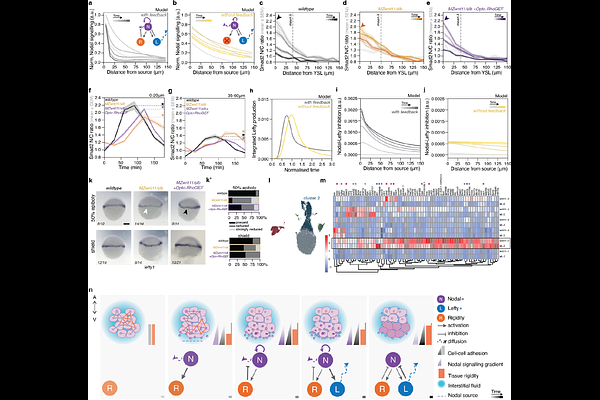A closed feedback between tissue phase transitions and morphogen gradients drives patterning dynamics

A closed feedback between tissue phase transitions and morphogen gradients drives patterning dynamics
Autorino, C.; Khoromskaia, D.; Harari, L.; Floris, E.; Booth, H.; Pallares-Cartes, C.; Petrasiunaite, V.; Dorrity, M.; Corominas-Murtra, B.; Hadjivasiliou, Z.; Petridou, N.
AbstractDuring development mechanochemical cues in the cell microenvironment are translated into signalling to drive cell fate decisions. As cells differentiate collectively, it raises the question of how tissue-level properties affect instructive cues of decision-making. Here, we show that a tissue rigidity phase transition guides patterning by tuning the length-scales and time-scales of morphogen signalling. By combining rigidity percolation theory, reaction-diffusion modelling, quantitative imaging, optogenetics and single-cell transcriptomics in zebrafish, we uncover dynamical global tissue rigidity patterns that actively shape the Nodal morphogen gradient by restricting ligand dispersal and accelerating its signalling activity. In this self-generated mechanism, Nodal, besides driving meso-endoderm fate specification, increases cell-cell adhesion strength via regulating planar cell polarity genes. Once adhesion strength reaches a critical point, it triggers a rigidity transition which collapses tissue porosity. The abrupt tissue reorganisation negatively feeds back on Nodal signalling impacting both its length-scales, by limiting Nodal diffusivity, and its time-scales, by speeding up the expression of its antagonist Lefty, thereby ensuring timely signal termination and robust patterning. Overall, we reveal how emergent properties set the spatiotemporal dynamics of morphogen gradients, uncovering macroscopic mechanisms of pattern formation.